The History Of Volvo C70
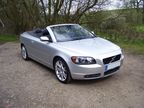
The Volvo C70 is a two-door manufactured by Volvo Cars in two generations: the first from model years 1997-2002 as coupé and from 1997-2005 as a softop convertible. The second generation C70 has been marketed since 2006 as a retractable hardtop
Volvo introduced the first generation C70 at the 1996 Paris Motor Show, following a European introduction as a 1997 model, and later as a 1998 model in North America — with both low-pressure (2.4L) and high-pressure (2.3L), 5-cylinder, turbocharged petrol engines and manual and automatic transmissions. Peter Horbury designed the exterior and Mexican designer Jose Diaz de la Vega led the interior design team.
The C70 broke Volvo's decades-long styling tradition of boxy, rectilinear designs. According to Peter Horbury, Volvo's design chief from 1991 to 2002, with the C70, Volvo threw away the box, but "kept the toy inside!" Our vision was to design a convertible that would meet the needs of a family of four looking for comfortable blue-sky motoring in a vehicle also providing stylish looks, performance and faultless driving and road-holding."
In a development program of 30 months and working with a Volvo 850-derived platform, Britain’s TWR (Tom Walkinshaw Racing) co-designed the car's basic design and suspension tuning with Volvo. Manufacture of the C70 was a joint venture until the two companies experienced disputes that threatened to interrupt production; TWR did not contribute to the second generation C70.
Volvo's first modern convertible, the C70 was manufactured in Uddevalla, Sweden on a separate assembly line from the 70-series sedan and station wagon. The four-seater convertible featured an electrically-heated glass rear window, automatic (pop-up) rollover hoops, seat belt pre-tensioners, boron steel reinforced A-pillars, front and side airbags, and a safety cage — a horseshoe like structure around the passenger compartment.
The cloth convertible top, initially available in four colors, was fully automatic, operated by a single, dashboard-mounted button. The top stored automatically under an integral rigid tonneau cover in a system pioneered in modern convertibles with the fourth generation Mercedes SL.
The C70 convertible exhibited two negative traits endemic to convertibles: poor rear visibility and pronounced skuttle shake, a characteristic whereby the structural design of the bulkhead between engine and passenger compartment of a convertible suffers sufficiently poor rigidity to negatively impact ride and handling — and to allow noticeable vibration, shudder or chassis-flexing into the passenger compartment.
An early special editions featured two-tone leather interior, SC-901 (1998) Dolby Pro Logic I stereo with 3-disc integrated changer unit (via a cartridge) 500 watts of power and 12 high end Dynaudio speakers.
The C70 was introduced to the press in a signature color (saffron orange metallic) and for the debut marketing, the 1997 movie The Saint featured a C70 — recalling the notable connection of the Volvo P1800 and the TV series from the early 1960s, The Saint with Roger Moore as Simon Templar.
The second generation C70 model was launched on 13 April 2006, sharing the Volvo P1 platform, designed by John Kinsey and built by Pininfarina Sverige AB. The three-piece retractable hardtop raises or lowers in under 30 seconds and replaces both the convertible and the coupé, the latter which had been absent from Volvo's lineup since 2003. The C70 is offered with a normally-aspirated gasoline engine with variable geometry turbocharger and common-rail direct injection.
The Insurance Institute for Highway Safety in the United States recently conducted its first crash tests of several convertibles and designated the C70 a "Top Safety Pick".
Safety systems include a door-mounted side impact protection inflatable which inflates upward when activated. The curtain has an extra stiff construction with double rows of slats that are slightly offset from each other. This allows them to remain upright and offer effective head protection even with the window open. The curtain also deflates slowly to provide protection should the car roll over. This is a unique solution in the automotive world.
The C70 retractable hardtop also features a roll over protection structure (ROPS) with two pyrotechnically charged roll hoops hidden behind the rear seats that deploy under roll-over conditions whether the roof is retracted or not.
See also
- ROPS
From Wikipedia, the free encyclopedia
More About Volvo C70
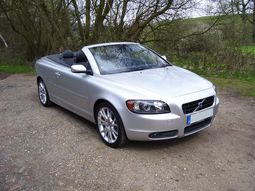
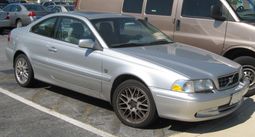
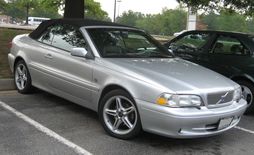
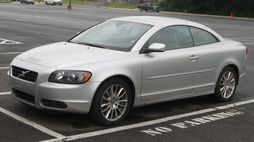
|